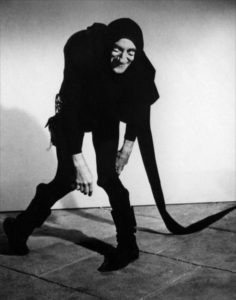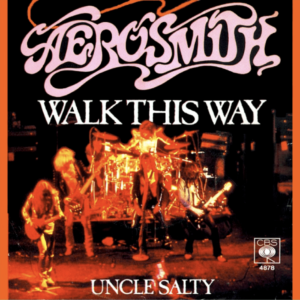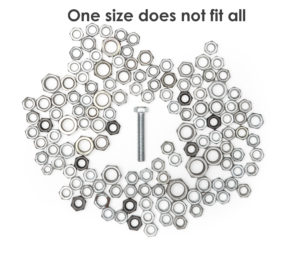Walk this way – Run this way

What way should we walk? What way should we run?
Mel Brooks and Gene Wilder wrote the script for the movie “Young Frankenstein” in which the character Igor the hunchback shows Dr. Frankenstein “this way”, and hands him his cane, expecting Dr. Frankenstein to mimic his hunched, contorted shuffle, which Dr. Frankenstein cordially does. This comedic scene inspired musician Steve Taylor of the band Aerosmith to create the hit song “Walk this way”


The way we walk can be as unique as a fingerprint, your iris pattern, or your voice.
Have you had the experience when you see someone walking in the distance and observe the way they walk and you think, I know that walk, that’s so and so.
Artificial intelligence is expanding the fields of forensic gait analysis and biometric gait analysis. Recognizing an individual by the way they walk and/or run is like recognizing an individual by their face.
Questions:
As a physical therapist who works with individuals who experience pain when walking and/or running the question “what way we should walk and/or run needs a more serious response than the character Igor in Dr. Frankenstein suggests.
This question “what way we should walk &/or run” raises many other questions.
What is the optimal, normal, or ideal style of walk &/or run?
When we observe and analyze the style of walking &/or running what parameters should we consider?
Which biomechanical parameters of walk &/or run are more important?
Can we observe, measure, and distinguish optimal walk &/or run from deviant or less than optimal walking &/or running?
As a rule, the way we walk &/or run is automatic or instinctual. Is the instinctual walking &/or running truly optimal or less than optimal?
Can we alter our automatic instinctual style of walking &/or running?
If we alter our automatic instinctual style of walking &/or running, can we decrease pain, prevent injury, and improve performance?
What is the optimal, normal, or ideal style of walking &/or running?
What determines whether the way we walk &/or run is ideal, good, or optimal?
It depends.
The debate regarding which kinematic and kinetic parameters are key determinants of gait started in 1953 and continues today. In the biomechanical community, this debate continues.
In her book Walk Yourself Well Sherry Brouman suggests and describes a one size fits all style way of optimal walking. Danny Dreyer author of Chi Running and Nicholas Romanov Author of Pose Method of Running suggest and describe competing styles of one size fits all optimal style way of running.
It is unlikely that there is a single global ideal way or style or way of walking &/or running. Much like there are different shoe sizes, there are different subclassifications or subgroups of the style or way of walking and/or running.

Subclassification of the way of walking &/or running
Subclassification, subgrouping, and precision diagnosis are based on the concept individuals possess nuanced and unique characteristics at the molecular, physiological, environmental exposure, and behavioral levels. Subclassification is used in the application of personalized, individualized, and/or precision medicine.
Subgrouping by the style or way of running and/or walking can be undertaken by using key biomechanical parameters.
Examples of using the style or way of walking sub-classification:
Simonsen et. al. use clustering of kinematic and kinetic parameters of healthy subjects to identify two subgroups of the style of walking. One group uses high levels of ankle joint force, while another group used high levels of force from the knee. The knee group showed more flexion of the knee joints.
Watelin et. al. look at the kinematic and kinetic parameters of walking to classify gait patterns of young men from elderly men. Old men show less muscle power at push-off when the heel is coming off the ground.
Kyeong et. al. use gait pattern analysis to subclassify the gait of individuals with Parkinson’s, syndrome from individuals with sciatic pain, and from individuals with musculoskeletal pain.
Dimond et.al. uses the style of walking and cluster analysis to distinguish normal healthy subjects from individuals with good results from total hip joint replacement surgery from individuals with poor results from total hip joint replacement surgery.
Examples of using the style or way of running subclassification:
There are several investigators who use subclassifying the style or way or running including: here; here;
- Foot strike pattern running – Anderson 2019
- Grounded running style – Davis, Sheeba 2020
- Ground contact time running short v long – Moore 2019
- Patella femoral arthralgia (knee pain) v normal – Phinyomank 2015
Cyrille Gindre and colleagues propose a subclassification of running style that is relatively simple. It is based on the Volodalen method of running. It uses 5 parameters of movements. Runners are either a terrestrial running style of aerial runner style, commonly called gliders or gazelles. Their work has centered around whether one style of running is more economical than the other, and recently they consider whether one style or running has more risk or injury. At the second level of subgrouping, they suggest differentiating whether a terrestrial runner has a style of either “too soft” or “too hard”, and whether an aerial runner has a style of either “too soft” or “too hard”. Running styles that are too hard tissue vibrations or noisy lead to excessive impact forces. In contrast running styles that are too soft show excessive movements pelvic obliquity, dynamic valgus, and increased pronation.
In a fascinating paper by Ben T Van Oeveren and colleagues, they present a theory of running styles using 2 parameters, the step frequency (cadence) and the ratio of stance time to strike time for a given speed or running. Their dual axis framework is 5 different styles of running: stick; bounce, push, hop, and sit. Their aim is to use this model for analysis of movements relative to running economy and injury risk, as well as coaching to improve performance.
The broad answer to the question of what the optimal way of walking &/or running is
The review above illustrates the attempts to use subclassification to answer the question, what is the optimal, normal, or ideal style of walking &/or running? It illustrates the complexity of the analysis of the mechanics involved in walking and/or running. Consensus on the best way to subclassify the style of the way of walking and/or running is lacking.
Arguably the optimal style or way of walking &/or running is in a way that expends less energy, less risk of getting injured, & just plain looks better.

Should you be concerned about the style or way your walk and/or run?
If you or if you have a family member or friend who
- Experience pain when walking and/or running
- If you are at greater risk of injury or experience recurring injuries related to walking and/or running
- Feel you look like an older adult when walking
- Have had frequent falls and walk slowly
- Is curious whether you run too much like a gazelle or a glider
- Is curious whether your way of the walk and/or running is too hard or too soft
- Is curious whether your style of running is stick; bounce, push, hop, or sit
- Want to walk and/or run farther, faster, injury free
Consider a consult with a physical therapist
A Physical therapist can
- Observe and analyze the style of the way of walking and/or running to validate potential style/way of subclassification
- Conduct a screening to assess whether you have the capacity to alter the style or way of walking and/or running.
- Assess whether the natural self-optimized style way of walking and/or running is truly optimal of is their potential to improve the style or way of walking and/or running
- Identify which parameters of gait have a strong relationship with injury and/or economy
- Identify which parameters of walking and/or running are not modifiable because of underlying structure and capacity and therefore should be allowed and encouraged
- Suggest individualized cues and feedback processes retrain and alter the current style or way of walking and/or running
The information on this website is not intended or implied to be a substitute for professional medical advice, diagnosis, or treatment. You are encouraged to perform additional research regarding any information contained available through this website with other sources and consult with your physician.
Damien Howell Physical Therapy – 804-647-9499 – Fax: 866-879-8591 At-Home, At Office, At Fitness Facility – I come to you, I do home visits Damien@damienhowellpt.com
